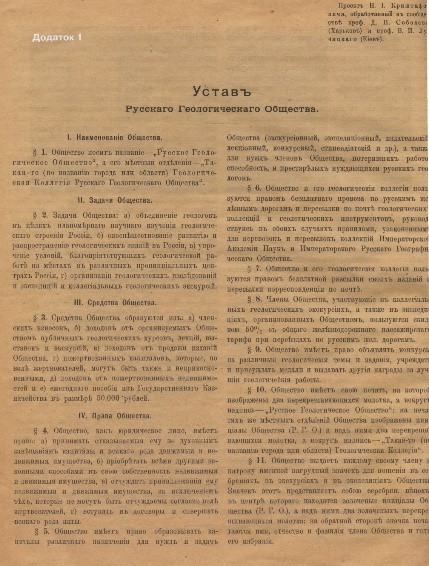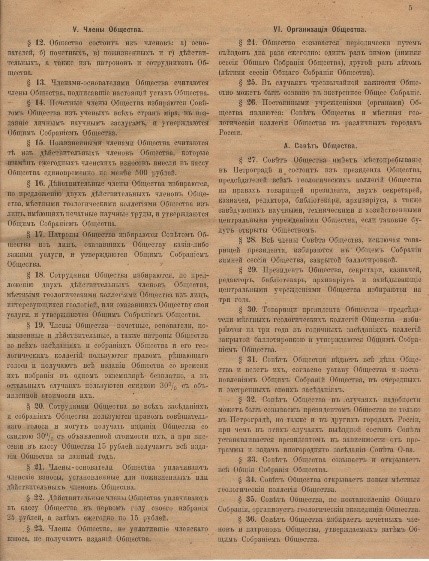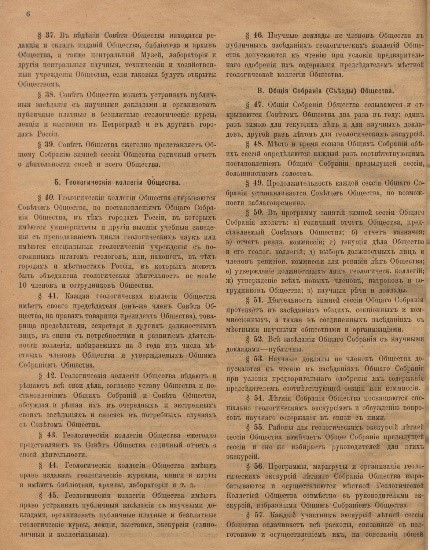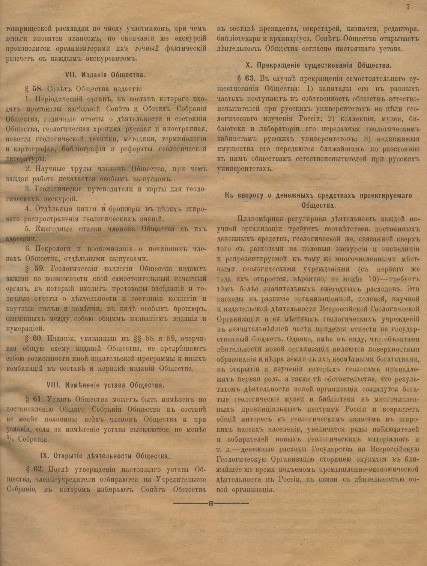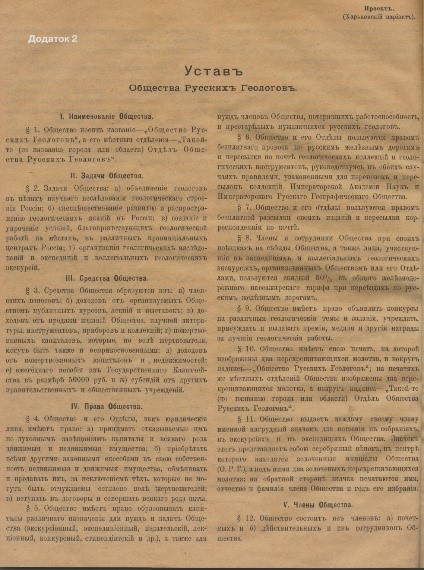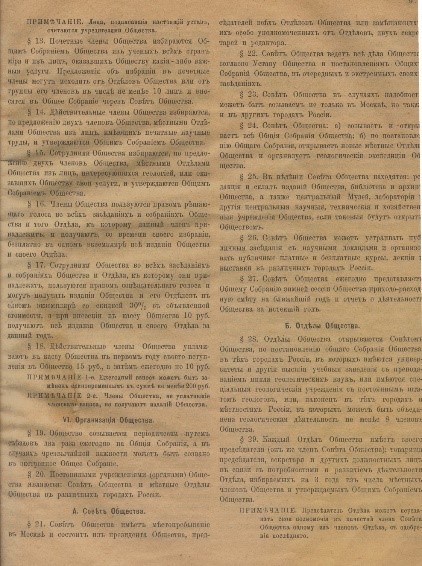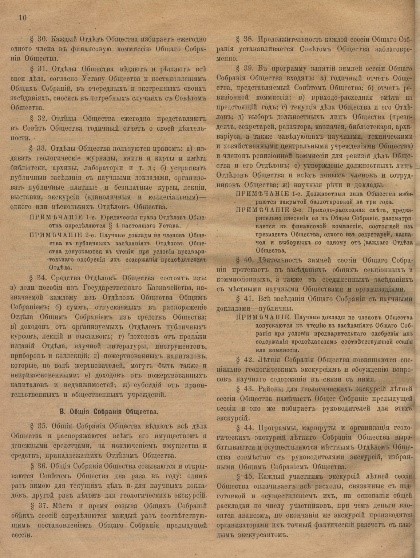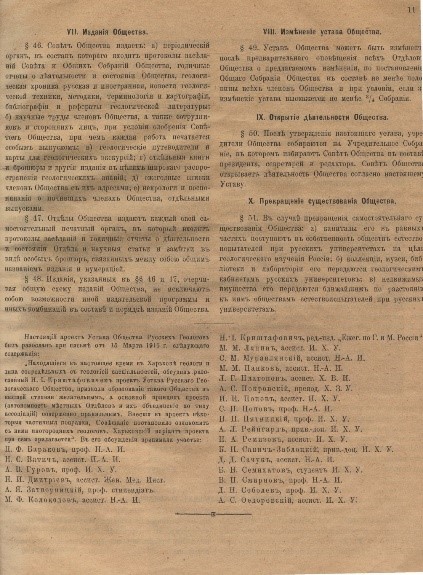Before the First World War, the Russian Empire was experiencing a period of rapid economic growth (1909-1913). It included most of the Ukrainian lands, except Galicia, Bukovyna, and Transcarpathia, which were part of Austria-Hungary. This economic rise was accompanied by the rise of the role of geological research, necessary for the search and exploration of inorganic and organic minerals - metal ores (especially iron and manganese) and coal (for metallurgy and energy), oil, phosphates (for agricultural needs), mineral salts (for chemical production), construction raw materials, supplies of drinking and technical water, etc.
The needs of geological support contributed to the intensive development of geological works and organizations, the emergence of scientific schools, which were grouped around geological departments of natural sciences departments of physics and mathematics faculties of universities, at polytechnic and mining institutes, as well as in national structures - "RAS" (Russian Academy of Sciences), " Geological Committee" (founded in 1882), "KEPSi" (Commission for the study of natural productive forces of Russia, organized in 1915 on the initiative of academician V. I. Vernadskyi).
With regard to Ukraine, these were Kharkiv, Kyiv and Novorossiysk (in Odesa) universities, Katerynoslav Mining and Kyiv Polytechnic Institutes. In addition to these organizations, many Ukrainian geologists worked in "Geolkom", "RAS" and "KEPS".
Before the First World War, Ukraine had a powerful scientific and industrial geological potential. Therefore, it is not surprising that it was Ukrainian geologists who initiated the creation of the first of a kind professional association, of trade union of geologists of the Russian Empire.
The initiator of this historical event was the Kharkiv geologist, editor of "Yearbook of Geology and Mineralogy of Russia" Mykola Kryshtafovych, professor of the Institute of Agriculture and Forestry (he was engaged in Quaternary geology). This happened in 1916, during the First World War, when many geologists were mobilized to the front in order to meet the engineering needs of the active troops (building fortifications, bridges, finding drinking water, etc.).
The scientist motivated the need for the creation of the Union of Geologists, which he proposed to call the "Russian Geological Society" in order to unite the efforts of geologists of the Russian Empire to solve important scientific and industrial tasks, which became more acute in connection with the challenges of the world war. He also developed the draft Statute of the "Russian Geological Society", supplemented in cooperation with professors D. M. Sobolev (Kharkiv) and V. I. Luchytskyi (Kyiv).
The draft Charter was sent to geologists of the main geological centres of the Russian Empire (February 1, 1916).
On March 15, 1916, a group of Kharkiv geologists (a total of 23 people, including Mykola Kryshtafovych and professors D. Sobolev and others) developed a new version of the Charter, calling it "Kharkiv". At the same time, it was proposed to change the name of the organization to the "Society of Russian Geologists".
Meetings were held on the ground, and after the discussion of the second version of the Charter, geologists from Kyiv, Odesa, Katerynoslav, Moscow, Kazan, Warsaw, Rostov-on-Don, Smolensk (a group of front-line geologists) sent their thoughts and comments to M. Kryftafovich. Petrograd - then capital of the state, where at that time the largest community of scientists, as well as individual geologists from Petrograd, Moscow, Tomsk, Voronezh, Kherson, Yuryev, Katerynoslav, Batumi was concentrated. In total, 186 geologists from all regions of the Russian Empire participated in the discussion of the Charter, according to the data we have.
On March 21, 1916, in Petrograd, in the premises of the "Geological Committee" under the chairmanship of Professor F. Levinson-Lessing, a crowded meeting of metropolitan geologists (70 names, including such authorities as O. Borysiak, V. Vernadsky , O. Karpinskyi, D. Mushketov, E. Fedorov, O. Fersman, etc.). Mykola Kryshtafovych himself was present at this crowded forum, having specially come from Kharkiv. Academician O. Karpinskyi was the initiator of the meeting, who opened it. Then M. Kryshtafovych made a speech, presenting his idea of creating the "Society of Russian Geologists".
The meeting, after a constructive discussion, supported the idea, stating in the resolution the first point: "The need for an association of geologists was recognized unanimously."
The resolution of the meeting of Kyiv geologists dated October 17 and December 18, 1916 (in Luchynsky's letter to Kryshtafovych dated January 30, 1917) stated:
Deeply respected Nikolay Yosifovich!
I am sending you the decision of the Kyiv geologists with great delay, as I was sick and could not do it myself earlier... Sincerely, V. Luchytskyi.
- The association of all Russian geologists is considered necessary.
- In order to work out the forms and methods of unification in accordance with the identified needs in it, the Assembly considers it necessary to convene the All-Russian Congress of Geologists or the Congress of Delegates from Higher Educational Institutions and Scientific Institutions.
- The meeting believes that the "Association of Russian Naturalists and Physicians" is too cumbersome an institution that encompasses a large number of scientific disciplines and a large number of members, and for these reasons alone is not able to sufficiently fully, timely and quickly satisfy special interests, tasks and the needs that are brewing among geologists at the present time.
- The Assembly considers the foundation of a special Russian Geological Society to be the only correct one for the purpose of unifying Russian geologists, which in particular:
- would contribute to the most complete use of all scientific geological forces of the country to solve the problems of scientific geological study of Russia;
- would contribute to the development and dissemination of geological knowledge in Russia;
- would create favourable conditions for geological work in various provincial centres of Russia.
- The charter of the new Society must be drawn up in its final form at the All-Russian Congress of Geologists or delegates.
- The Assembly considers it extremely important to include in the Society's charter the clauses that the Society fulfils its goals primarily by convening two types of annual Congresses:
- winter - for discussion of scientific reports;
- summer - for excursions and related reports.
- Since the need to create a Society uniting all Russian geologists is felt especially acutely in the province due to the disparity of the geological forces in it, lacking a special organization, the Assembly believes that in order to bring provincial geologists to the new Society as widely as possible, it is necessary to include it in the charter the ego of the clause on the right of discovery in places is separated in the likeness of the Imperial Russian Geographical Society.
- When drafting the statute, it is necessary to take all measures to implement the principle of decentralization in it.
- The assembly resolves to appeal to Academicians A. Karpinsky, V. Vernadsky, N. Andrusov, and A. Pavlov with a request to organize in May 1917 in Petrograd or wherever convenient according to the conditions of the All-Russian Congress of Russians Geologists or delegates.
P. Armashevsiy
V. Luchytskyi
V. Chirvinsky
L. Kryzhanovsky
E. Oppokov
H. Burenin
V. Smirnov
V. Riznychenko
V. Dubyansky
P. Koronevych
B. Lychkov
M. Arkhangelskaya
E. Mylovskaya
A. Krasovsky
V. Rabchevsky
N. Lotashevsky
P. Hryshchinsky
S. Koklyk
I. Kobetskyi
V. Luchytsky
It seemed that there was only one step left before the creation of the "Society of Russian Geologists", but the merciless scourge of the bloody world war made its changes. Economic problems, and then the revolutionary unrest of 1917, the abdication of the tsar, the growth of social disorder, and defeats at the fronts disrupted the plans of geologists.
The Union of Geologists of Ukraine, which in 2010 celebrated ten years since its foundation, honouring the glorious traditions of its predecessors, believes that 1916 was the beginning of the unification of Ukrainian geologists into a single professional and scientific organization, created for the purpose of studying the treasures of the bowels of the native land.
